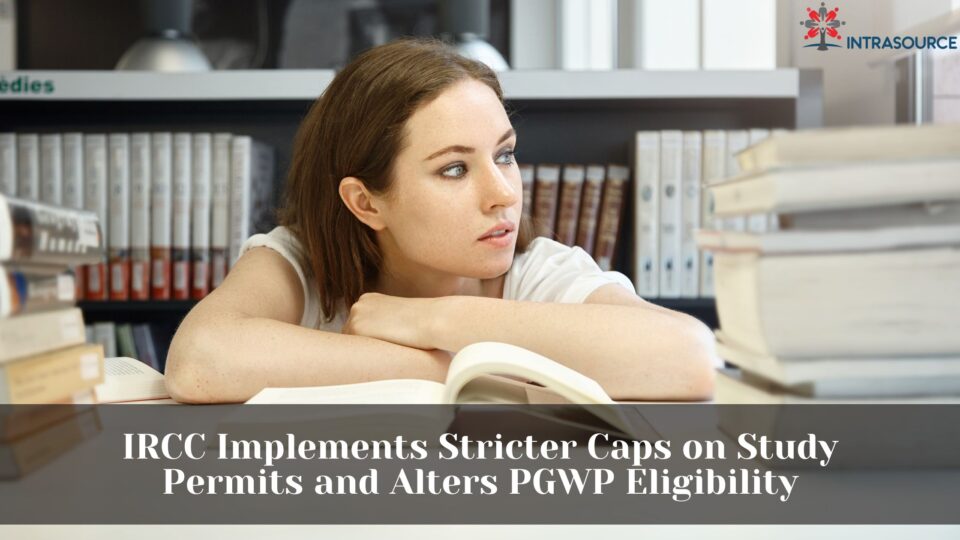New Cap on Study Permits
Canada’s Immigration Minister, Marc Miller, has confirmed that the international student cap is here to stay. Beginning in 2025, Immigration, Refugees, and Citizenship Canada (IRCC) will issue a maximum of 437,000 study permits. This number represents a 10% reduction from the 2024 target of 485,000 study permits issued and aims to stabilize intake through 2026. IRCC predicts that this will lead to a reduction of 300,000 study permits for international students in the coming years.
“This is just one of several changes to Canada’s international student program,” stated Miller. “Our immigration system must maintain its integrity and be sustainable. We will do everything necessary to set newcomers up for success.”
Provincial Attestation Letter Requirement
In addition to the new cap, master’s and doctoral students will now need to obtain a Provincial Attestation Letter (PAL). Approximately 12% of the allocated study permits will be reserved for these advanced degree students due to their significant contributions to the Canadian labor market. PALs were introduced earlier this year for many college and undergraduate students as a measure to verify genuine applications and control permit issuance.
Changes in PGWP Eligibility
The eligibility criteria for Post Graduation Work Permits (PGWP) have also been revised. From November 1, 2024 onward, university graduates applying for a PGWP will need to demonstrate a Canadian Language Benchmark (CLB) score of 7, while college graduates will need a minimum CLB score of 5. It is anticipated that these modifications will result in a 175,000 decrease in the number of PGWPs issued over the next three years.
Restrictions on Spousal Open Work Permits
IRCC is also implementing new restrictions on work permits for spouses. Only the spouses of Master’s degree students in programs lasting at least 16 months will be eligible for spousal open work permits. This change is projected to decrease the number of spousal work permits by 50,000 over three years.
Additionally, outside the scope of the international student program, spousal open work permits will be limited to spouses of Canadians or permanent residents employed in critical sectors.
Impact of Temporary Foreign Worker Program on Canada’s Employment
Canada’s unemployment rate has been rising since April 2023, with an increase of 1.5 percentage points during that period. According to Employment and Social Development Canada (ESDC), the overall unemployment rate climbed from 6.4% to 6.6%. In August 2024, there were 1.5 million unemployed individuals, marking a rise of 60,000 (+4.3%) from the previous month.
To address this issue, measures have been announced to reduce the number of temporary residents in Canada who hold work permits. Minister of Employment, Workforce Development and Official Languages, Randy Boissonnault, alongside Minister Miller, emphasized that the Temporary Foreign Worker Program (TFWP) should be a last-resort solution and not used to replace Canadian workers or suppress their wages.
Despite this, Minister Boissonnault noted that immigration accounts for 99% of Canada’s economic growth, a figure expected to reach 100% by 2032.
Changes to the Status of Temporary and Permanent Residents in Canada
Canada’s immigration system has undergone significant reforms this year with numerous measures introduced. In January, IRCC implemented the first-ever cap on study permits as a temporary policy valid until the end of 2025. This cap included provincial allocations for study permits and introduced the PAL system.
Additionally, further restrictions were placed on PGWP eligibility, making students in college programs with “curriculum licensing agreements” ineligible. Spousal Work Permits were also restricted to spouses of students in master’s and PhD programs, with some exceptions.
In March, Minister Miller announced that for the first time, the Immigration Levels Plan for 2025-2027 would include temporary resident levels as part of efforts to reduce the number of temporary residents holding study or work permits.
Canada has also taken other steps to decrease temporary residents:
- Terminating the COVID-era policy that allowed some visitors to apply for job-supported work permits from inside Canada.
- Halting the processing of Labour Market Impact Assessments (LMIAs) in the low-wage stream of TFWP for jobs in Census Metropolitan Areas (CMAs) with an unemployment rate equal to or exceeding 6%.
- Considering major changes to Post-Graduation Work Permit (PGWP) issuance by tying these permits to educational programs that prepare graduates for employment within in-demand sectors of the Canadian economy.


